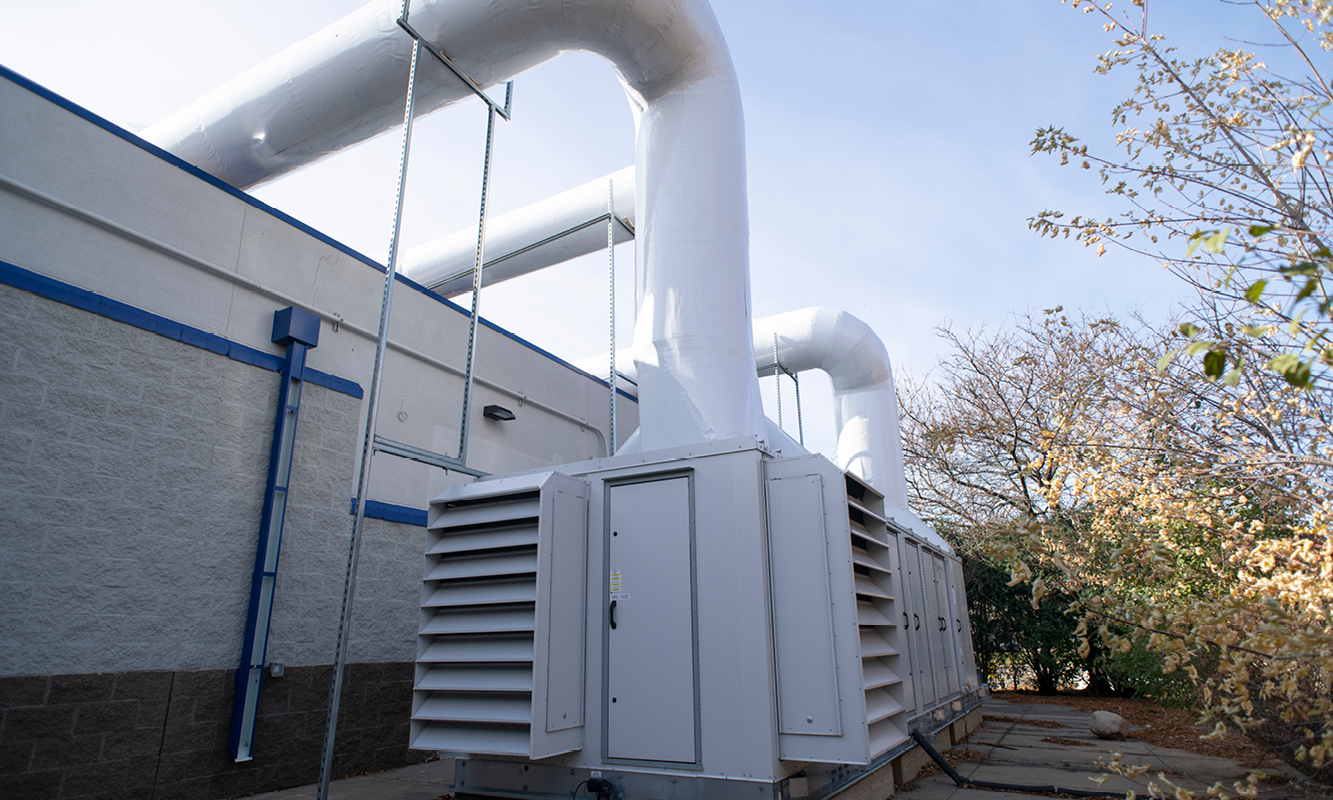Safety and health have always been at the core of what we do at Foss Swim School and how we do it. Helping people be safer around water is the foundation of our swim education, but safety also extends to the experience in our schools and doing all we can to promote physical health and wellness. Our state-of-the-art air filtration are designed to keep fresh outside air mixing and circulating in our pool areas at a very high rate. The Environmental Protection Agency mentions ventilation with outside air as one tool that can help reduce transmission of sickness throughout an enclosed area.
Keeping air clean
The main issue typically found in the air at an indoor pool is chloramines. Chloramines form when the chlorine used to disinfect the water interacts with contaminants in the water. These contaminants are broken up and most are removed from the water via the water filtration system. But some of the byproducts of the chlorine interaction (the chloramines) are lighter than water but heavier than air, so they naturally gather at the lowest point in the pool room – the first few inches of air atop the pool surface.
(As a side note, these chloramines have a strong odor that most people think of as a “pool smell,” often incorrectly assumed to be the smell of chlorine. Pure chlorine itself has a mild smell, so if you enter a pool and it’s really stinky, that means a lot of contaminants in the water have interacted with the chlorine and/or the air filtration can’t keep up for one reason or another.)
Chloramines can irritate the skin, eyes and nose, so we design our air filtration first and foremost to keep the air moving and keep sucking the air off the surface of the water and out of the pool area. We achieve this by:
- Blowing fresh air at the water’s surface from above at one end of the pool area
- Drawing air out from the opposite end of the pool area as close to the floor as possible
- Creating a slight vacuum by exhausting more air out than we pump into the pool area
Essentially, the air above the water is always moving in one direction, toward the vents that suck it out of the room, carrying the chloramines with it.
Some of the air pulled from the pool is exhausted outside, where the chloramines dissipate harmlessly. The rest goes through a filtration and conditioning process, is constantly mixed with 30%-40% fresh air drawn from outside and circulated back through the pool area to repeat the process.
Keeping air comfortable
The other half of the equation is air comfort. With our warm pools featuring 90-degree water that makes it so delightful to learn to swim, the air in the pool area tends to take on some of that warmth and humidity. As the air goes through the filtration and recirculation process described above, we also aim to return it to a temperature and humidity level that will make the pool area more comfortable for the people inside.
Since the air comes off the pool warm and heavy, what we need to do to it varies through the year. In the summer, when we are adding outside air that also is hot and sticky, we need to run the air though cooling towers and dehumidifiers. In the winter, depending on outside temperature, we may need to warm the air before sending it into the pool area – sending cold air across warm water would lead to clammy condensation.
Without getting further into the technical details, it’s worth noting that maintaining air comfort and quality is no simple task and requires constant on-the-fly balancing as we mix and purify inside and outside air. It’s something we know deeply impacts our learning environments and a competence we’ve developed over our 27 years running, designing and building our many pools.
Making air filtration more energy efficient
The final factor we need to consider is efficiency. Recent changes to energy codes aim to reduce energy consumption spent heating and cooling the air by requiring us to recirculate a certain percentage of our air. This has made filtering chloramines from the air as it goes through our system even more important – chloramines are very corrosive and hard on machinery. Adjusting the mix to use more recirculated air, while using less power for air conditioning, means we need to add increasingly robust air cleaning technology.
So, the next time you come to Foss Swim School, pause a moment to appreciate the big silver boxes on the roof or next to the building (in some cases in both places) and the maze of ductwork and vents overhead and near your feet. They are the result of lots of careful planning and engineering, all to create an air filtration system that, when everything works correctly, no one even notices because it’s as near as we can get it to being like swimming outside on a warm summer day.
Thanks for taking this look behind the scenes at FOSS with us, and we’ll see you at the pool!
